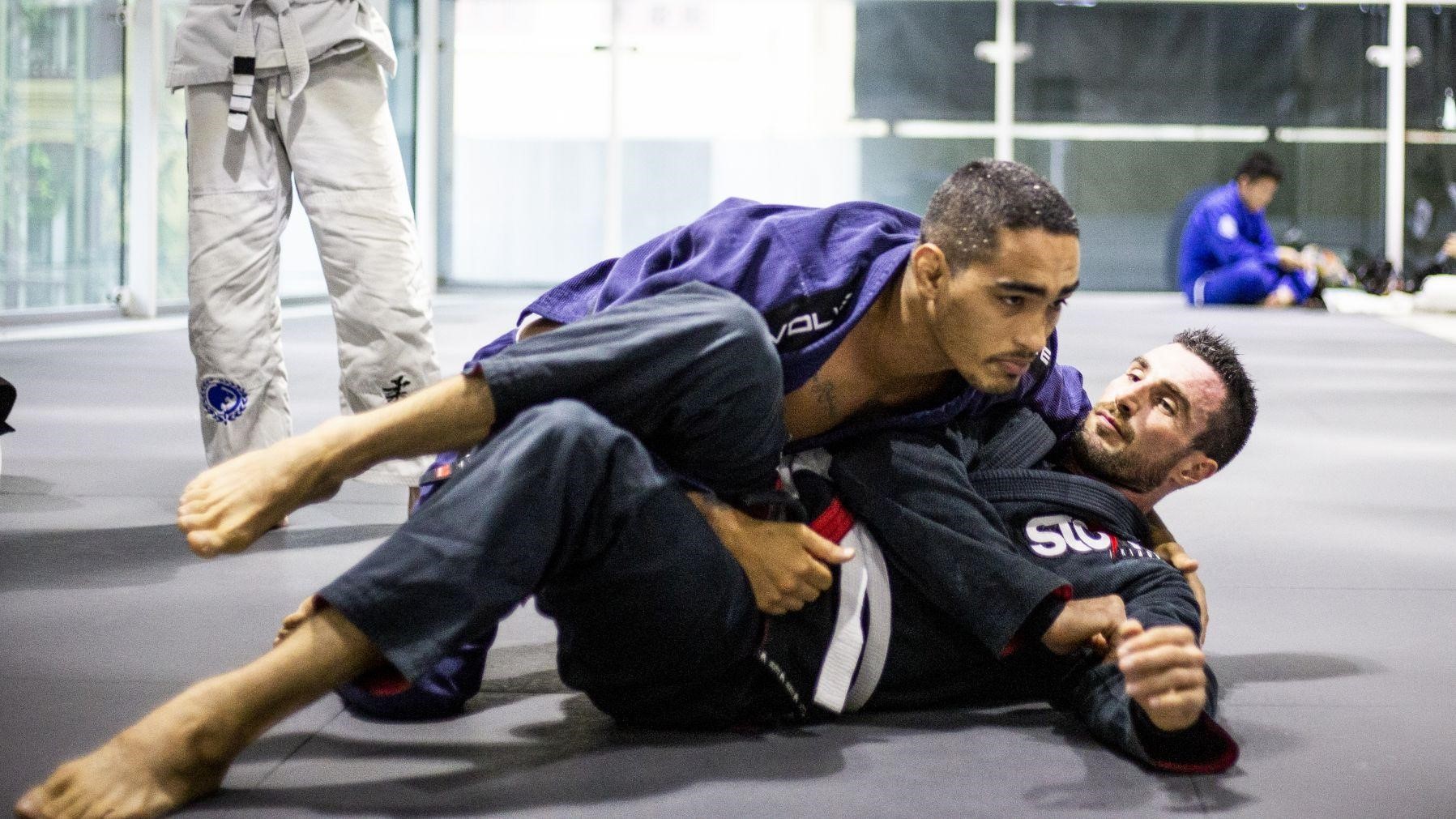In every combat sport, a strengthening coach spends hours in designing programs which are sport & position specific. BJJ is no different. Jiu-Jitsu is an incredibly complex sport. It’s a ground fighting science. All of the techniques applied in BJJ are multi-layered. Every athlete has their own specific game style. An important art that is used in BJJ is the guard. It’s the key grappling position and most common fight position. Some players like open guard & some closed guard. Others might want to play at the top of the game. Intense drilling & study are needed for getting a good grasp of different methodologies & philosophies. Any playing position you prefer requires specific skills and training for mastering them.
BJJ Strength training can get overwhelming, figuring out which exercise will be useful for perfecting a certain guard position can be confusing. In this article we will examine movements that directly impact your guard positioning.
● Closed Guard
Closed guard (also referred as full guard) is a typical guard position in which legs are hooked at the back of your opponent, and prevent them from standing or moving forward.
BJJ players who favor closed guard find themselves in a constant battle for controlling posture, hip positioning & grip fight. For escaping a guard, the opponent should open it first. Guard passers usually work on controlling the hips, that’s done by grabbing the belt or placing your palms beside the hip bones. For initiating any attack by the closed guard, a particular angle must be created first. For creating that angle your opponent’s must be out under control.
In Brazilian Jiu-Jitsu Gi positions, your body usually operates like a single coordinated unit. It’s specifically true for the closed guard positions.
In order to break your opponent’s posture, your legs, arms, core & back all work together. Trying to break down someone’s posture by just using your arms or legs is very difficult and not effective. Workouts such as squats, chin-ups and deadlifts allow your body to work as a single unit and help with improving your guard position.
Strength & endurance is significant for training and strengthening the jiu-Jitsu performance. You yourself can choose to play by the close guard position most of the time in the match. Closed guard constantly squeezes your adductors which can cause the underdevelopment of your glutes. Fair combination of bodyweight exercises can help with that.
● Open Guard
Open guard, griping is critical. Fight of the open guard is about controlling the grips when a guard passer tries to break them. The body operates as a single in the open guard position as well. Athletes must know that a good grip does not just require muscles of your forearms, it’s more about learning how you can activate your latissimus dorsi for locking everything in. Core strength also plays well with these positions. Variations of pull-up & chin-up grips do a good role for improving open guard strength. Mobility is also important for such positions.
It is important for open guard BJJ players to regularly foam roll their lats, hamstrings, thoracic spine, quads, & calves. Not being able to fully extend your legs due to any restrictions, enables you to generate tension that is required for fully extending your legs.
Most effective Exercises for Guard Players
BJJ positions can be troubling and demanding, executing them correctly can be tricky and requires proper time. Determining which exercises strengthens what part of your game can be overwhelming. Here we will explore the most effective movements that directly affect your playing guard position.
1) Bulgarian Split Squat:
Engaging your legs in a unilateral manner can be an effective practice of your BJJ strength training regimen. Particularly, the open guard in the game of Jiu-Jitsu each of your works independently. Establishing the grip by using one hand and pushing the leg to the guard positions.
Begin in the movement with your back leg elevated below the level of your knee. Aim for distributing more weight on your leading leg, while maintaining the slightest hinge at the hip level for preventing the arch at your lower back.
Loading yourself with the dumbbell will feel more natural. While descending down, you might drift backwards a little to make sure that the weight remains fairly distributed through the heel of your lead leg.
2) Hip Thrust
The hip extension helps a lot with guard retention. Start this workout by pressing your shoulder blades against the stable anchor of your back. Using a hip thruster will be ideal, but some sturdy bench or aerobic risers can be also used for the same purpose. The top position is the most significant phase of this exercise.
You have to ensure that the shins stay in the vertical position, doing so will prevent more contribution from quads and hamstrings. Most important factor is the cue; you must keep the head forward & ribs down closer to the hips. Doing this prevents the lumbar hyperextension that gets along with the pain response. This exercise also facilitates the posterior pelvic tilt, that maximizes the contribution from your glutes.
3) Pull-Ups
Using your lats for keeping the elbows stuck at your sides is an amazing way of staying safe while being at the bottom. Most of the pulling motions have direct transfer to the pulling guard. Start this workout with a dead hang, make sure your lats remain engaged throughout the exercise. Even when your elbows are upright, keep the shoulders away from the ears. A rep would be incomplete if the chin barely crosses the level of the bar. In the initial stages of this movement, your elbows should remain glued as you reach the top of this moment. This might appear hard when you are performing this exercise, the thumb is aiming to pull that bar at the level of your collar bone for completing the rep.
4) Inverted Row
Inverted rows are more like the pull-ups, it makes you use your bodyweight for training the pulling motion. It’s a sensible method in the weight class-based game. Horizontal rows particularly help with addressing your forward-shoulder posture which is utterly important in grappling.
The closer bar or the handles go to the floor the more challenging this exercise will be. Irrespective of the height, the whole setup allows both of your arms to extend fully without your back being in contact with the floor. Make sure you keep your glutes engaged, while allowing your whole body to get aligned in a straight line & move in the form of a single unit.
Move the bar closer to the mid chest to keep your elbows from flaring away from your torso. Do not look at the bar, doing so will cause your whole body to fall, while preventing your body from going further like a single unit. End the rep by moving your shoulder blades closer.
6) Deadlift
Beside the most obvious advantages of posterior chain training, the main concept behind having the strong grip with the extending legs is found in many of the open guard variations. The deadlift workout works incredibly well for training pain free.
Start this workout by beginning with the classical deadlift position, by placing both of your feet under your hips, & both of your hands directly under your shoulders. Limit the distance of how farther your knees are capable of drifting over the bar by changing your hip height. Make sure you keep both of your lats engaged to make sure that the bar does not drift far away from your whole body. Bar should start, & remain, over your mid foot in the whole movement. Then complete the whole exercise by driving your foot on the floor till your hips come directly under your shoulders. Both of your arms should stay straight in the whole movement, & your spine neutral.




